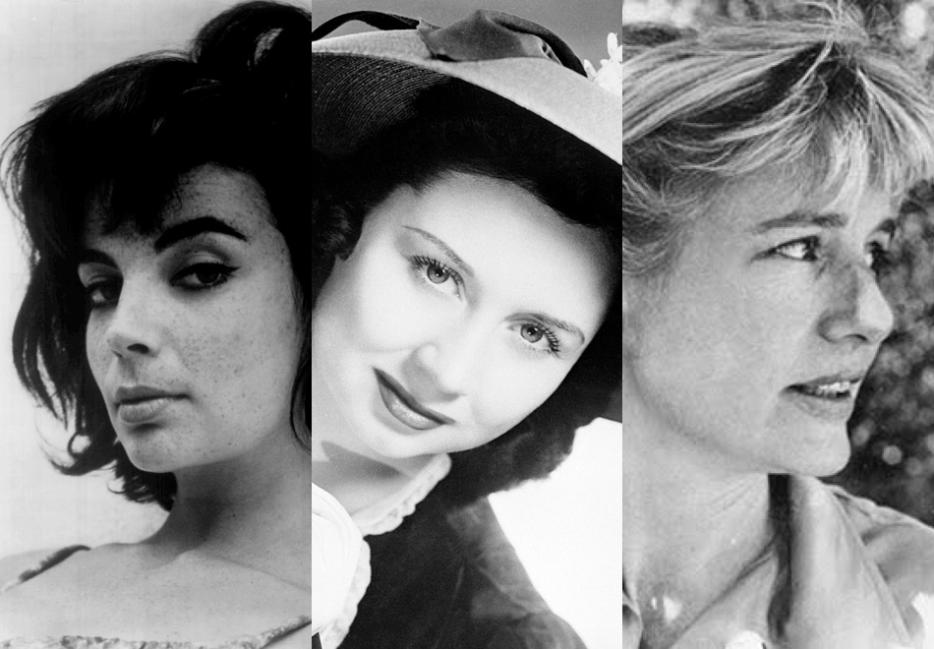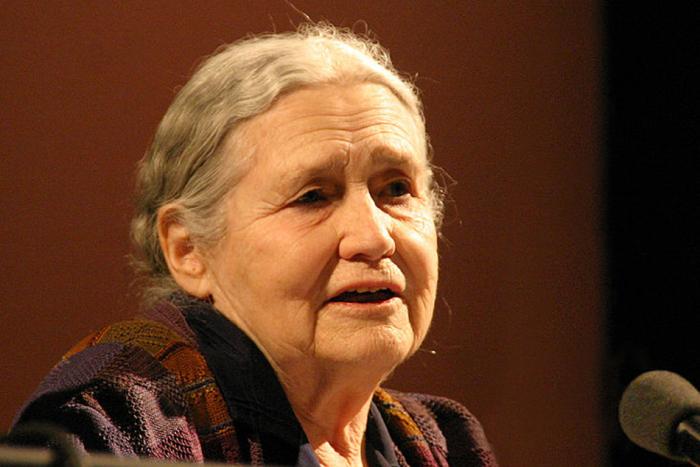The assassination of John Fitzgerald Kennedy opens up the most pernicious of black holes, theories on top of theories grasping to explain and assign guilt for what happened on November 22, 1963. Believing in a Grand Unified Theory that ends on a grassy knoll in Dallas is, apparently, more of a comfort than believing in a single sniper with dubious mental health issues who happened to be both extremely accurate and outrageously lucky. If my scant experience as a government employee has taught me anything, though, it’s that what looks like a well-ordered conspiracy is far more likely to be a catastrophic mixture of inertia and incompetence. Unconnected events merge together due to haphazard cover-ups and end up doing a much better job of raising further questions than providing any kinds of answers.
Fifty years on, theories continue to emerge; already I’m bored with those that don’t even exist yet, on top of the countless ones that unfortunately do. What frustrates most is the way the need for a Theory of Everything JFK—as if Einstein devised E=mc2 to explain murderous political actions—engulfs the vivid lives and untimely deaths of those caught in the crossfire—three women in particular. This endless conspiracy-mongering subsumes their accomplishments and complicated personalities—it transforms them into puppets of a shadow world, robbing them of whatever shreds of dignity they deserved to have in death.
*
At 22, Karyn Kupcinet was supposed to be a star. Her beauty smoldered from heavy-lidded eyes, midnight-colored hair, and a stage and screen presence that mixed innocence and burgeoning sexuality, qualities especially prized in 1963. She won raves the year before for her portrayal of Annie Sullivan in a Malibu summer stock production of “The Miracle Worker,” and was chosen as an actress to watch, along with thirteen others, by one of Hollywood’s many talent agent associations. Her last name didn’t hurt, either, among those who paid attention to the Chicago scene, where her father Irv chronicled the ups and downs of high society in his Chicago Sun-Times column and on television.
By November 1963, Kupcinet was nowhere close to being a star. Her relationship with Andrew Prine, a regular on the television show The Wide Country (on which she had guest-starred once), had collapsed. She wanted him exclusively; he wanted to date other women. Kupcinet handled the breakup by sending threatening letters to her ex and his new girl, upping her alcohol and drug intake, and getting busted for shoplifting. She worked, but the parts were tiny, often uncredited, sticking her career in neutral with the wheels spinning.
On the night of November 27, Kupcinet had dinner with friends, acted strangely—“her lips seemed numb. Her voice was funny. She moved her head at odd angles,” one of them later told police—then took a cab home. A short time later, two other friends showed up to hang out and watch television, as Kupcinet owned “the best television” among her crowd. She said she was tired and retired to her bedroom, leaving her friends to see themselves out by 11:15. Three days passed without further word from her. Worried about her prolonged silence, the same friends Kupcinet dined with—the actor Mark Goddard and his wife, Marcia—went to her apartment. The place smelled, and they let themselves in. Kupcinet lay nude on the couch. There were no obvious trauma signs. Then the Los Angeles coroner discovered, mid-autopsy, that her hyoid bone was broken. Kupcinet’s death was classified as a homicide, and remains unsolved.
*
Born into privilege, Mary Pinchot Meyer threw it aside for the artist’s life, and its accompanying freedoms, in a city perplexed by the very idea. At 24, after working as a journalist, Meyer married into the intelligence world through her husband, Cord, a high-ranking CIA official. He prized discretion and secrecy in his day job, but at night the Meyers circulated amongst the hoi polloi of their chosen Georgetown neighborhood, most notably with Washington Post executive editor Ben Bradlee, who was married to Mary’s sister, and a young senator named Jack Kennedy and his wife Jacqueline.
Escalating marital turbulence lay underneath the glittering surface, exacerbated by tragedy: the Meyers divorced a little more than a year after their nine-year-old son, Michael, was struck by a car and killed in 1956. Mary, on her own at the age of 38, with her other sons shipped off to boarding school, took full advantage of her newly single nature, embracing LSD (with the help of her new friend Timothy Leary), devoting herself to her art, and conducting affairs with a number of men, artistic and powerful. One of those men was Kennedy, at the peak of his presidency.
Two days before her 44th birthday, on October 12, 1964, Meyer finished a painting and took a walk near her house in Georgetown. Witnesses heard several shots and a woman screaming “help me, help me.” The woman was Meyer, dead of two wounds: one in the back of the head, the other through her heart. A soaked, shambling black man seen near the crime scene minutes later was arrested, singled out by eyewitnesses. That man, Ray Crump, was tried the following year, but the eyewitness accounts didn’t hold up in court, and he was acquitted. Meyer’s death remains officially unsolved.
*
If the mysterious deaths of Kupcinet and Meyer weren’t on Dorothy Kilgallen’s radar, they should have been. It was her business, columnizing for the New York Journal-American as the “Voice of Broadway,” to keep up with the exploits not just of powerful people, but those with tenuous, lurid connections to said powerful people. Kilgallen understood power in her bones, as the daughter of a newspaperman, as a young crime reporter covering trials of Bruno Hauptmann (the accused, and convicted, Lindbergh baby kidnapper), and then as the first woman since Nellie Bly—and the first by airplane—to travel around the world, her daily dispatches and pluck catapulting her to stardom.
By 1965, Kilgallen was on television nightly as one of the “What’s My Line?” crew, had wrapped up 20 years of “Breakfast with Dorothy and Dick,” the morning radio show she co-hosted with her husband, Dick Kollmar, and was preparing a book of her favorite criminal trial chronicles, Murder One, for publication. At the age of 52, with more than 30 years of investigative journalism and wry commentary under her belt, Kilgallen was one of the most influential and visible people in New York City.
On November 8, 1965, she left the studio after another live broadcast of “What’s My Line?,” decamped to a nearby hotel for drinks and dinner, and eventually made her way home to her Upper East Side townhouse. The next morning, Kilgallen’s hairdresser found her dead in the third floor bedroom, her glasses slightly askew on her face, a book in her hand she’d apparently read before, and no signs of foul play. It looked like a heart attack, but after an autopsy, the cause of death was signed off on as a mix of barbiturates and alcohol. The whispers that something more sinister and shadowy was at work began not long after.
[pagebreak]
That Kilgallen, Meyer, and Kupcinet became footnotes in JFK conspiracy land rests squarely on the shoulders of a Texas journalist named Penn Jones, Jr. As publisher of the Midlothian Mirror, a weekly newspaper in rural Texas near where he was born and raised, Jones had a platform to spout off on transparent government and holding fast to the tenets of democracy. Jones’ opinions met with violent detractors who firebombed the Mirror in 1962. But he would not be deterred, especially when Kennedy was shot in Dallas, a visit Jones covered.
Jones’ penchant for finding shadows and secrets spurred him to question the official narrative of the president’s assassination in editorial after editorial. He self-published four volumes of them, beginning in 1966 under the titular banner Forgive My Grief: A Critical View of the Warren Commission Report on the Assassination of John F. Kennedy. From volume 1 onward, Jones hunted for connections like the proverbial snark, drawing up a list of 150 people whose deaths were mysterious enough, and whose lives tangentially connected to Kennedy, to be part of the larger conspiracy. With more than 22,000 copies printed, Forgive My Grief found an eager audience early, and kept it as others latched on to Jones’ flat prose that happily tied disparate factual dots together.
Jones claimed Kupcinet for his list. According to him, she was the mystery woman who, just 20 minutes before Kennedy’s death, called the FBI from an Oxnard, California, telephone exchange and breathed, “the president will be shot.” Jones gave no reason for his unshakable belief that Kupcinet was the mystery woman. Her ex-lover, Andrew Prine, later stated he and Kupcinet were in another part of the state during the shooting. There is no concrete evidence Kupcinet was psychic or privy to such explosive information, and when the Today Show, in 1992, flashed her picture among those whose deaths “connected” to Kennedy’s, her father’s next Sun-Times column was irate: “That is an atrocious outrage... The list apparently has developed a life of its own and for Today to repeat the calumny is reprehensible.”
*
Mary Pinchot Meyer landed on Jones’ list for her intimate Kennedy connection. Their affair was only hinted at publicly in the late 1960s, but was an open secret in and around Georgetown. It finally became common knowledge in 1976, though, when James Truitt, the ex-husband of one of Meyer’s best friends, blabbed about the pair’s dalliance to the National Enquirer, which was then backhandedly confirmed by Meyer’s sister, Tony, and her now-former husband, Bradlee. Truitt added that Meyer kept a diary, which had been seen by several people, but whose current whereabouts remain unknown, and the description of its contents varied on whom was asked (the consensus was that Meyer wrote of her sexual adventures with the president in some detail.) The diary might have been scooped up by James Jesus Angleton, the one-time director of national intelligence, in the midst of disgrace for his oversight of the MK-ULTRA program. It might have been burned.
But, as Nina Burleigh’s excellent and insightful 1998 book on Meyer’s life and unsolved murder A Very Private Woman details, there is a great difference between having an affair with a great figure relevant to national security interests that might prove embarrassing later on, and being shot to death for it. Meyer wasn’t only a murder victim, a woman in the wrong horrible place at the wrong horrible time; she was a victim of a patriarchal system that prided marriage and motherhood over independence, and then punished those who sought to explore newfound personal freedom. And if that wasn’t enough, she became a victim of the JFK conspiracy sphere, whose all-encompassing terrain cemented Meyer’s legacy as a footnote in a great man’s death.
The world Meyer lived in was best described by Angleton’s wife Cicely, who told her husband’s biographer: “We were loyal women who got the short end of the stick. The husbands had careers, travel, and outside interests, and we had none of that.” When a woman, like Meyer, did move into unorthodox waters, whether through her art or by gaining the trust of a man like Kennedy, it was of the utmost importance to cover up those accomplishments after death to preserve the sham of decorum—even if, by doing so, it revved up the conspiracy machine further.
*
As for Kilgallen, she had set herself up for the gaping maw of the Kennedy conspiracy-mongers for at least two years before her death. She obtained early excerpts of the Warren Commission’s report and published them in her column, openly critical of their findings that Oswald acted alone. Kilgallen interviewed Jack Ruby in 1964 and, afterwards, told acquaintances she had a “great scoop” that would “blow the JFK case sky high.”
She consistently refused to reveal her sources, and in the last year of her life, fractured her arm, became increasingly reliant on alcohol and pills, squabbled more with her husband, and fell under the spell of the much younger film journalist and suspected CIA operative Ron Pataky. He denied a sexual relationship with Kilgallen, and any intelligence ties, to Midwest Today in 2007, but others, including Kilgallen’s daughter Jill, believed differently.
Kilgallen’s death is legitimately mysterious. Her body, dressed in a peignoir with full makeup on, was found in the third floor master bedroom, where she “never slept,” according to her hairdresser Marc Sinclaire. (She slept on the fifth floor, her husband Dick on the fourth.) The air conditioner was on, but Dorothy preferred the heat. The book in her hands which she had finished reading weeks earlier, was turned upside down on the bed, but her reading glasses were nowhere to be seen. Dick, their 11-year-old son Kerry, and the boy’s tutor had slept in the townhouse, but claimed to hear nothing unusual. The death certificate was signed by a medical examiner in another borough, who was baffled to learn of this news many years later, later saying he knew “nothing about the case” and “didn’t know how the hell [he] could have signed” the certificate in the first place.
Again, as in the case of Meyer, any cover-up likely obscured the larger truth of her life. Kilgallen was accomplished, envied, feared, and even ridiculed by the rich and famous, but she clearly moved in powerful circles and held huge influence; it was a piece of information she possessed about judicial bias that helped save Sam Sheppard from death row. And just as clearly, her life was unhappy, filled with bouts of loneliness staved off by legal narcotics or ill-fated emotional affairs (including one with pop singer Johnnie Ray). She took the assassination of JFK seriously and investigated it with purpose, but it was never clear, as with it was with her earlier forays into investigative journalism, whether there was substance behind the smoke.
*
By linking the deaths of Karyn Kupcinet, Mary Pinchot Meyer, and Dorothy Kilgallen to JFK conspiracy theories, the real mysteries surrounding their demises lost their importance. Despite sporadic media attention, their cases remain inactive or closed. Because the primary suspect in Meyer’s murder, Ray Crump, was acquitted, he cannot be tried again, and DC police disposed of all evidence 25 years after her death, meaning there is no remaining physical evidence to test for DNA. Kupcinet’s killer or killers may be out there, may still be living, but it’s equally unlikely the LAPD retained evidence to test. And Kilgallen’s death seems destined to dangle precariously between accident and misadventure, whether by her or someone else’s doing.
Each of these women—distinct, intelligent, questing, curious, powerful, connected women—lived for something larger. Each of their lives ended too soon. Each of them left behind families who still grieve their absence, 50 years later. Turning them into tiny spokes of an all-encompassing hub dehumanizes their lives, and makes a joke of their deaths. They are more than names on a list.





